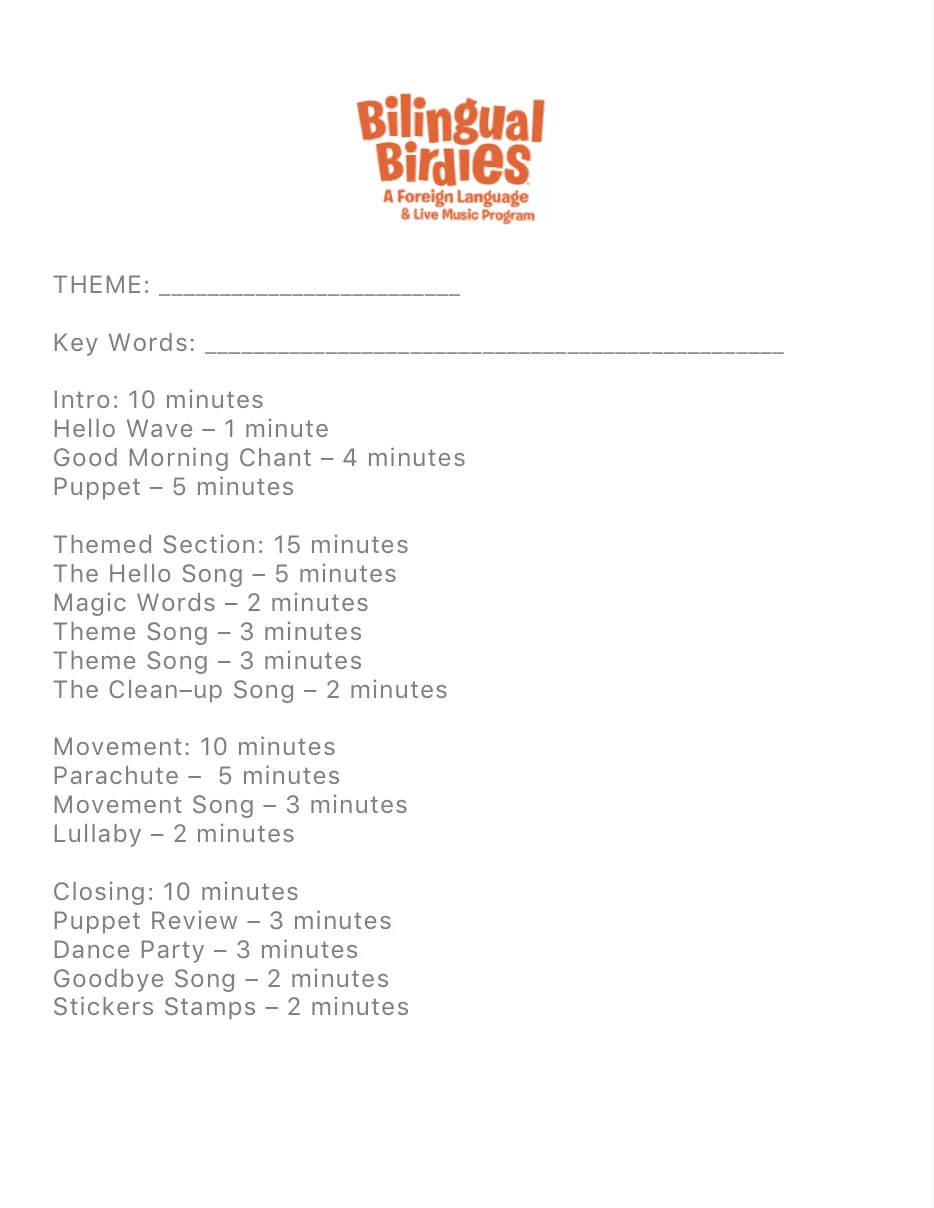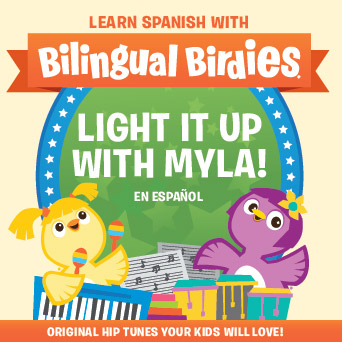Fruits Mandarin agendas
水果|Shuǐ Guǒ


KEYWORDS: 草莓|căo méi (strawberries), 我很饿|wǒ hěn è (I am hungry), 一|yī (one), 二|èr (two), 三|sān (three), 四|sì (four), 五|wǔ (five), 六|liù (six), 七|qī (seven), 八|bā (eight), 九|jiǔ (nine), 十|shí (ten), 现在|xiàn zài (now), 停止|tíng zhĭ (enough), 苹果|píng guǒ (apple), 酪梨|luò lí (avocado), 橘子|jú zi (orange), 梨子|lí zi (pear), 李子|lĭ zi (plum), 香蕉|xiāng jiāo (banana), 柠檬|níng méng (lemon), 吃|chī (eat)
INTRO:
- 你好|Nǐ Hăo Wave (Hello Wave)
- 早安|Zăo Ān Chant (Good Morning Chant)
- Puppet: Myla很饿|Myla Hěn È (Myla Is Hungry)
THEMED SECTION:
- 你好歌|Nǐ Hăo Gē (Hello Song)
- Magic Words: 现在|Xiàn Zài / 停止|Tíng Zhĭ (Now / Enough)
- 水果沙拉|Shuǐ Guǒ Shā Lā (Fruit Salad)
- 苹果和香蕉|Píng Guǒ Hé Xiāng Jiāo (Apples and Bananas)
- 收拾时间|Shōu Shí Shí Jiān (Clean-up Song)
MOVEMENT:
- Parachute
- 草莓歌|Căo Méi (Strawberries)
- 我们一起|Wŏ Mén YÌ Qǐ (We Are Going To)
LULLABY:
- Lullaby: 听|Tīng (Listen)
CONCLUSION
- Review: 吃|chī (eat), 苹果|píng guǒ (apple)
- Dance Party
- 再见朋友们 |Zài Jiàn Péng Yǒu Mén (Goodbye Friends)
- Stickers / Stamps



 Download the Light It Up With Myla music album to complete your training:
Download the Light It Up With Myla music album to complete your training:


